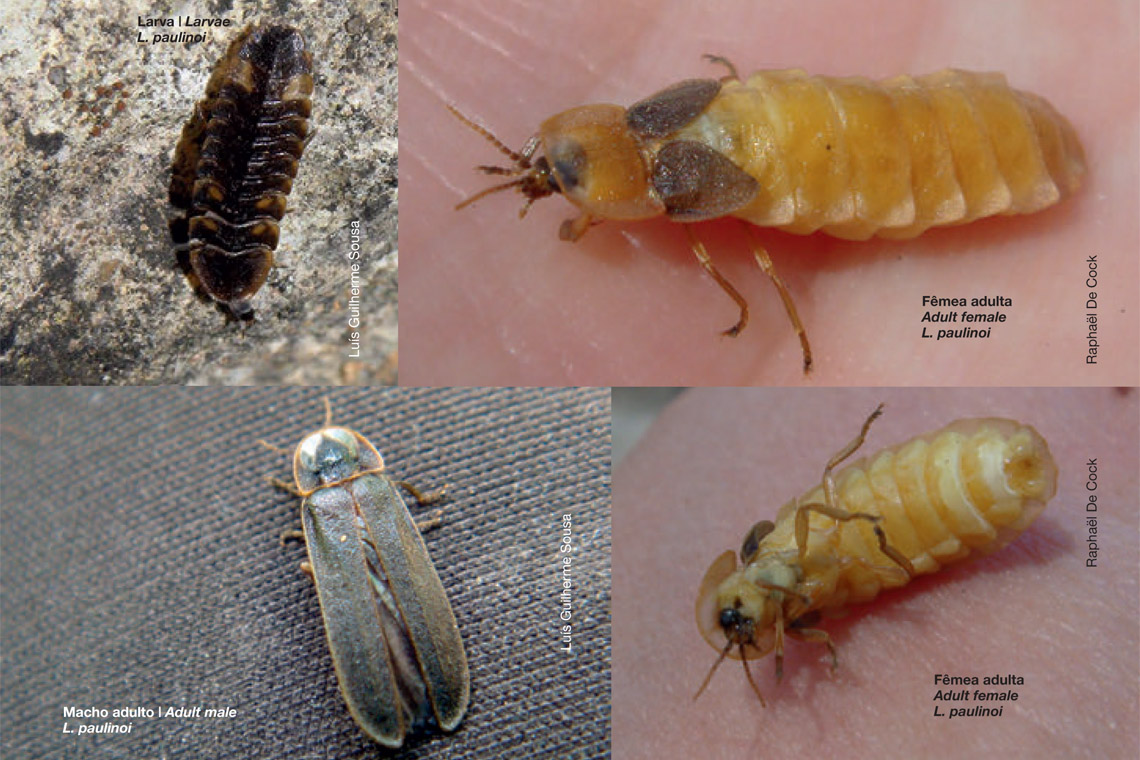Lamprohiza paulinoi Olivier, 1884
The small larvae can be seen glowing on Spring and Summer nights, in the leaf-covered ground. The larvae have a distinct dark – brown colour pattern with pale yellow-beige coloured dots. The underside is pale yellow-beige.
These larvae may be distinguished from L. mulsantii and the other Lamprohiza species by the lighter coloured sides of the corners of the segments (a bit similar to the pale spots in the Lampyris colour pattern). Just like in other Lamprohiza species, they also have lateral glow spots all over their abdomen, usually over 4: in the metathoracical and abdominal segments, especially in abdominal segment 6. Just like in other Lamprohiza species these glow dots also shine upward through paler regions in the dorsal cuticle. They often emit light when handled.
Behaviour and where to observe
Females emit a continuous glow from the ground. They are flightless but have vestigial elytra. Males, however, do fly while searching for females. The L. paulinoi females are bigger and their colour is of a darker yellow than that of L. mulstantii. The light organs are inherited from the larval stage and they also show two larger ventral adult lanterns in the 5th and 6th abdominal segments.
Adult female: Glows sitting on the ground or clinging on plants and walls. Females are yellowish pale and telling them apart from their close relative, L. mulsantii, can be difficult (see above for details of how to distinguish between them).
Adult male: The underside has several colours, ranging from pale-yellow to pale coffee brown. Elytra have parallel sides contrary to L. mulsantii that have more rounded elytral sides and therefore a more oval shape. When handled or disturbed, they emit a weak glow from the light spots inherited from the larval phase which are inside the body. Flies dark during the night.
Size
Larva: 4 to 20 mm. Adult male: around 15 mm. Adult female: 15 to 18 mm.
Trivia
Can also be found at Parque Biológico de Gaia. It is endemic to the Iberian Peninsula.
Text and photos - «Fireflies and Glow-worms of Portugal», 2015, ISBN n.º 978-989-98330-9-8.




